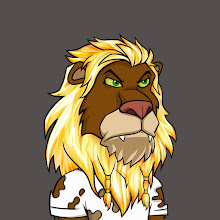Creating Movements from Stills: Animating photos from a shoot I did with Ebony Daniels many moons ago. It's 2025 and you've probabl...
 |
| Creating Movements from Stills: Animating photos from a shoot I did with Ebony Daniels many moons ago. |
It's 2025 and you've probably noticed the world of AI is constantly evolving, seemingly at an exponential rate. One of the most exciting frontiers of this evolution is the world of AI-generated video.
The power of turning a simple text prompt into a captivating visual story, or bringing a still photograph to life with realistic motion isn't science fiction anymore – it's the reality that platforms like Kling AI are bringing to the table. If you're relatively new to the world of AI video then buckle up, because Kling AI may be about to blow your mind.
WTF is Kling AI?
Kling is developed by Kuaishou, the tech giant behind the popular video-sharing platform. Kling AI is an advanced AI model that specialises in generating high-quality videos from text descriptions (text-to-video) and animating static images (image-to-video). Think of it as a digital director that can bring your creative visions to life with just a few words or a single image.
Why Should You Be Excited?
For newcomers to AI video, several key features of Kling AI make it particularly compelling:
- Text-to-Video is where the real magic happens. You can simply type a description of the video you want to create – for example, "A majestic eagle soaring over snow-capped mountains at sunset" – and Kling AI will generate a short video based on your prompt. The results are often surprisingly realistic and visually stunning, making it an incredible tool for brainstorming, storyboarding, or even creating short films.
READ MORE: https://t.co/HDZE8pikel
— Auki Henry 🦁 (@aukiman) January 26, 2025
"A majestic eagle soaring over snow-capped mountains at sunset" Text-to-Video prompting with Kling#Ai pic.twitter.com/kmLSiAVk8L
- Got an old photo you cherish? Kling AI can animate it! Imagine a portrait suddenly blinking or a landscape scene with gently swaying trees. This feature adds a new dimension to your memories and opens up exciting creative possibilities.
- One of the biggest challenges in AI video generation is creating natural-looking movement. Kling AI excels in this area, using advanced techniques to ensure that the generated videos have smooth and believable motion, making the results far more immersive and engaging.
- Whether you need a video for a widescreen presentation or a vertical clip for social media, Kling's dynamic resolution capabilities ensure your videos are formatted for most platforms. This flexibility is a huge plus for content creators who need to adapt their content for different formats.
- The "Elements" Feature for Scene Consistency is a game-changer for creating more complex narratives. The "Elements" feature lets you define characters, objects, and environments within your AI-generated scenes and maintain their consistency throughout the video. This opens the door to creating short stories or even mini-series with consistent visuals.
What Can You Do With Kling AI?
- Quickly generate engaging video content for social media, marketing campaigns, or personal projects.
- Bring your ideas to life with vivid visuals, even if you don't have any video editing experience.
- Experiment with different ideas and concepts by quickly generating visual prototypes.
- E-commerce (with "Virtual Try-On"): Although not solely focused on this, the "Virtual Try-On" feature in Kling offers possibilities that might be of some interest for online retailers, particularly in the fashion industry. I'll expand on this below.
The "Virtual Try-On"
While Kling AI's core strength lies in general video generation, its "Virtual Try-On" feature presents an interesting use case specifically for online retail, particularly within the fashion industry. This feature goes beyond just placing a digital image of clothing onto a static photo of a model. Kling leverages an understanding of motion and 3D space to create a more dynamic and realistic "try-on" experience.
Here's how it works and why it's a game-changer: Instead of a flat, superimposed image of clothing, Kling AI can generate images or even short video clips that show how a garment moves and drapes on a model. This provides a far more accurate representation of how the clothing will look in real life, addressing a major pain point for online shoppers.
By allowing customers to "virtually try on" clothes, they are more likely to make a purchase if they can visualise how the clothing will look on them, leading to higher conversion rates.
The "Virtual Try-On" can be further enhanced by incorporating personalised avatars or even allowing customers to upload their own photos. This level of customisation creates a more personalised shopping experience,.
Retailers could use this technology to showcase different styles and combinations of clothing, encouraging customers to explore new looks and potentially increase their average order value. Imagine being able to instantly see how different accessories, shoes, or other garments complement a particular outfit.
Creating traditional product photoshoots with models is time-consuming and expensive. Kling AI offers a more efficient and cost-effective alternative by allowing retailers to quickly generate visuals for their garments and marketing.
At its core, Kling puts creative power in the hands of anyone, regardless of their technical skills, to create pretty darn good visual content. As the technology continues to evolve, I'd expect expect even more impressive results and innovative features to be in the pipeline. Kling AI is definitely worth exploring.







COMMENTS